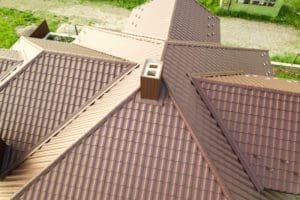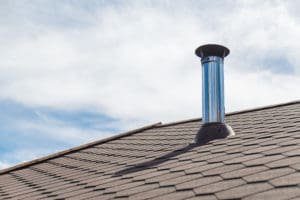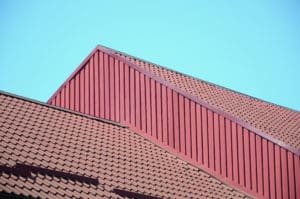With the arrival of summer, it’s the perfect time to take care of your home’s siding and ensure it remains in top condition. Siding plays a crucial role in protecting your home from the elements, so it’s important to prioritize regular maintenance. In this article, we will discuss the importance of siding maintenance, how to prepare for it, a step-by-step guide to maintaining your siding, tips for choosing the right siding material, and how to continue caring for your siding after summer ends.
Understanding the Importance of Siding Maintenance
Siding serves as a protective barrier for your home, shielding it from rain, wind, and other environmental factors. It contributes to your home’s energy efficiency and aesthetic appeal. Regular maintenance not only helps to preserve the appearance of your home but also ensures your siding’s durability and longevity.
When it comes to siding maintenance, it’s not just about appearances. The role of siding goes beyond aesthetics; it is crucial for the protection of your home’s structure. By maintaining your siding, you are safeguarding your home against moisture infiltration, which can lead to mold and mildew growth. These issues not only pose health risks but can also compromise the structural integrity of your property. Furthermore, properly maintained siding acts as an insulator, helping to regulate indoor temperatures and reduce energy consumption, ultimately leading to lower utility bills.
The Role of Siding in Home Protection
Siding acts as a shield against moisture, preventing it from seeping into the structure of your home. Moisture infiltration can lead to mold and mildew growth, which can be detrimental not only to your health but your home’s structural integrity. Additionally, siding plays a vital role in insulating your home, reducing energy consumption and lowering utility bills.
Ensuring your siding is well-maintained is not just about curb appeal; it is a fundamental aspect of home maintenance that directly impacts the longevity and functionality of your property. By investing time and effort into siding maintenance, you are proactively protecting your home from potential damage and preserving its value over time.
Why Summer is the Ideal Time for Siding Maintenance
Summer provides favorable weather conditions that allow for effective siding maintenance. Warmer temperatures and longer daylight hours make it easier to inspect, clean, and repair any issues. By addressing siding maintenance during the summer, you can prevent further damage and prepare your home for the upcoming seasons.
During the summer months, the dry weather offers the perfect opportunity to assess the condition of your siding and address any issues before they escalate. From conducting a thorough inspection to performing necessary repairs or applying protective coatings, summer allows homeowners to take proactive measures to maintain the integrity of their siding. By taking advantage of the longer days and milder weather, you can ensure that your siding remains in top condition, enhancing both the aesthetics and functionality of your home.
Preparing Your Siding for Maintenance

Before diving into the actual maintenance, it’s essential to prepare your siding adequately. This involves identifying common siding problems, gathering the necessary maintenance tools, and understanding the importance of regular upkeep to prolong the lifespan of your siding.
Proper maintenance not only enhances the curb appeal of your home but also protects it from the elements, such as harsh weather conditions and pests. By investing time in maintaining your siding, you are also investing in the overall well-being and value of your property.
Identifying Common Siding Problems
Start by carefully inspecting your siding for any signs of damage. Look out for cracks, loose or missing pieces, rot, mold, or discoloration. Identifying these problems early on will allow you to address them promptly and prevent further deterioration. Keep in mind that different siding materials, such as vinyl, wood, or fiber cement, may have specific issues to watch out for, so familiarize yourself with your siding type.
Gathering Necessary Maintenance Tools
To effectively maintain your siding, you’ll need a few tools on hand. These include a soft-bristle brush or sponge, mild detergent or siding cleaner, a garden hose, a ladder if needed, paint touch-up tools, sealant, and a caulking gun for more extensive repairs. Having these tools readily available will make your maintenance tasks more manageable and efficient, ensuring that your siding remains in top condition for years to come.
Step-by-Step Guide to Siding Maintenance

Maintaining the exterior of your home is essential for preserving its curb appeal and structural integrity. Proper siding maintenance not only enhances the aesthetics of your property but also protects it from the elements. By following a few simple steps, you can ensure that your siding remains in top condition for years to come.
Cleaning Your Siding Effectively
Regular cleaning is key to keeping your siding looking fresh and vibrant. In addition to removing dirt and grime, cleaning your siding can also prevent mold and mildew growth. Before starting the cleaning process, it’s important to inspect your siding for any signs of damage or wear.
Start by removing any loose debris or dirt from your siding using a soft-bristle brush or sponge. Then, mix a mild detergent or siding cleaner with water following the manufacturer’s instructions. Apply the cleaning solution to your siding, working in small sections from bottom to top. Use the brush or sponge to gently scrub the siding, focusing on areas with stains or grime. Rinse off the cleaning solution thoroughly using a garden hose, making sure not to leave any residue behind.
For stubborn stains or areas with heavy buildup, you may need to use a pressure washer. However, it’s essential to use the pressure washer with caution to avoid damaging the siding or forcing water underneath it.
Repairing Minor Siding Damage
Over time, your siding may develop minor damage such as cracks, chips, or holes. Addressing these issues promptly can prevent further deterioration and prolong the lifespan of your siding. Inspect your siding regularly for any signs of damage and make repairs as needed.
If you notice any cracks, loose pieces, or small holes in your siding, it’s essential to address them promptly. Use paint touch-up tools to fix any minor imperfections, matching the color as closely as possible. For small holes or cracks, apply an appropriate sealant to prevent further damage and maintain the integrity of your siding.
Keep in mind that different types of siding materials may require specific repair techniques. If you’re unsure about how to repair a particular type of siding, it’s best to consult with a professional to avoid causing more harm.
When to Consider Professional Siding Repair
While some siding maintenance tasks can be tackled as a DIY project, certain issues are best left in the hands of professionals. If you encounter significant damage or structural concerns in your siding, it’s wise to consult with a professional siding contractor. They have the expertise and equipment to handle more complex repairs effectively.
Professional siding contractors can also provide recommendations on the best maintenance practices for your specific type of siding. By investing in professional maintenance services, you can ensure that your siding remains in optimal condition and protects your home for years to come.
Choosing the Right Siding Material for Your Home

Comparing Different Siding Materials
When it comes to choosing the right siding material for your home, there are various options available. Common siding materials include vinyl, wood, fiber cement, and metal. Each material has its unique advantages and considerations that homeowners should carefully evaluate before making a decision. Consider factors such as durability, maintenance requirements, cost, and aesthetic appeal.
Wood siding offers a timeless and natural look, but it requires regular maintenance to prevent rot and insect damage. Vinyl siding, on the other hand, is low maintenance and comes in a wide range of colors and styles. Fiber cement siding is known for its durability and resistance to fire and pests, making it a popular choice among homeowners. Metal siding, such as aluminum or steel, is highly durable and can provide a modern aesthetic to your home.
Factors to Consider When Choosing Siding
To make an informed decision, you should consider your climate, personal style preferences, and budget. Take into account the level of maintenance you are willing to commit to and the expected lifespan of the siding material. Consulting with a reputable siding professional can provide valuable insights and help you make the right choice for your home.
Climate plays a significant role in determining the best siding material for your home. For example, wood siding may not be the ideal choice in areas with high humidity or frequent rain, as it is prone to rot and mold. In contrast, vinyl siding is a great option for regions with extreme temperature fluctuations, as it can expand and contract without warping. Consider how each siding material performs in your specific climate to ensure longevity and performance.
Maintaining Your Siding After Summer

Preparing Your Siding for Fall and Winter
As summer transitions to the cooler months, it’s essential to prepare your siding for the upcoming fall and winter seasons. Clear any debris from gutters and downspouts to ensure proper drainage. Trim any nearby trees or branches that could potentially damage your siding during strong winds. Additionally, consider applying a protective coating or sealant to safeguard your siding from the harsh weather conditions ahead.
Furthermore, inspect the caulking around windows and doors near your siding. Cracked or deteriorated caulking can allow moisture to seep in, potentially causing damage to both your siding and the interior of your home. Replacing old caulking with a fresh seal can help maintain the integrity of your siding and improve energy efficiency.
Regular Siding Maintenance Tips
Maintaining your siding should not be a one-time effort but an ongoing process. Regularly inspect your siding for any signs of damage, such as cracks, fading, or peeling paint. Keep your siding clean by periodically washing it with mild soap and water. Consider scheduling professional maintenance every few years to address any issues that may arise.
Additionally, check for any signs of pest infestation or mold growth on or near your siding. Insects, such as termites, can cause significant damage to wood siding, while mold can not only deteriorate the siding material but also pose health risks to you and your family. Promptly addressing any pest or mold issues can help preserve the structural integrity of your siding and maintain a healthy living environment.
By following these essential home siding maintenance tips, you can ensure the longevity and durability of your siding while enhancing the overall curb appeal of your home. Remember that regular maintenance is key to preventing more significant problems down the line and that consulting with professionals when needed is always a wise decision.





